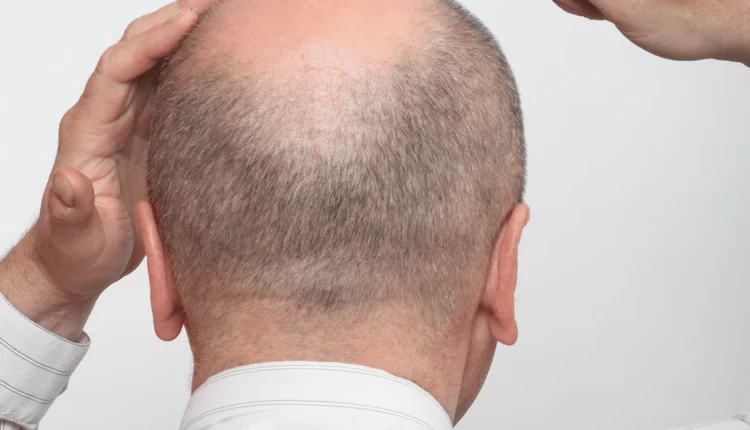Hair loss is a prevalent concern affecting many different people across the world, with statistics revealing that two-thirds of men above the age of 35 begin to show visible signs of it. Among the various types of hair loss, Androgenetic Alopecia, also widely known as male pattern baldness, is one of the most common types for affected individuals to suffer from, impacting up to 80% of Caucasian men. Alopecia Areata is another one that younger individuals, in particular, are afflicted with.
Excessive loss of hair can greatly affect a person’s self-esteem and lifestyle and, in more severe cases, end up having a negative psychological impact on them. While various solutions to tackle hair loss exist, more advanced therapies like stem cell treatments have proven to be more effective and direct when targeting the root cause of the condition.
Hair strands are complex structures composed of multiple types of cells that largely relies on the health of the hair follicle for proper production and regeneration of it. Understanding the basics of hair loss is therefore important, considering the numerous factors that can heavily influence it, ranging from aging and stress to illness and hormonal changes, to medications and excessive hair styling or use of harsh chemicals on it. Specifically, the hormone dihydrotestosterone (DHT) is known to affect both the skin and hair, the latter by shrinking hair follicles and shortening the hair growth cycle to result in hair loss. The use of stem cell treatments would help to better regulate the mechanisms of DHT within the body by triggering dormant follicle production and kickstarting hair growth in the applied area.
The more effective the treatment is, the better the chances of achieving the desired results, which is where brands like CALECIM® Professional come into play. Their approaches and solutions are rooted in the biocellular science behind cosmeceuticals and are solidly backed by evidence of previous testing and successful results in clinical trials and settings. It all culminates in their patented formula called PTT-6® which contains well over 3,000 active growth factors, cytokines, and exosomes—proteins that boost many cellular functions—per milliliter.
Derived from ethically sourced stem cells, the PTT-6® ingredient aims to boost hair growth by creating an optimal environment for which hair follicle production can thrive and reducing the excessive inflammation caused by an imbalance in the immune system that is the culprit behind certain hair loss cases. Hair health is very much tied to the well-being of the scalp, as supported by studies that have identified the connection between a healthy scalp and hair vitality, so a microenvironment that is rich in nutrients and balanced in hormone levels and tissue health would contribute positively to cell regeneration and follicle enrichment.
By harnessing stem cell mechanics, the PTT-6®-infused serums contribute towards the design of such a microenvironment within the dermis, and when used alongside the technique of microneedling, has allowed for quicker and deeper absorption of the solution into the scalp and skin. In particular, exposure to CALECIM® has been shown to reduce the inflammatory cytokine TNF-alpha, decreasing the rate of hair fall and nurturing the hair growth cycle back to a more equal balance.
In-vitro and clinical tests that have been conducted on patients have delivered positive results, having shown a 14% improvement in the quality of hair strands and a 16% increase in its diameter and thickness after undergoing a 12-week treatment course. In the study, the various growth factors present in CALECIM® products like the Advanced Hair System targeted dormant follicles with precision, activating their cellular production and raising their rates by 24%. It worked to minimize scalp inflammation by a considerable amount as well.
Other promising methods that involve the use of stem cells in managing hair loss include utilizing Platelet-Rich Plasma (PRP), which is a form of regenerative treatment that employs the natural protein cells derived from the patient’s own blood. The formula will contain a high amount of platelets and a whole host of growth factors whose purpose is to support cellular regeneration and heal impaired tissues. This is then injected into the affected area, and its composition can include growth factors that are found in hair canal formation, epidermal growth factors that control how hair follicles grow, fibroblast growth factors that encourage cell generation, and plenty of other types. Numerous studies have supported the efficacy of PRP injection therapies in treating conditions like Alopecia Areata and Androgenetic Alopecia, with patients showing superior results compared to other more conventional medications.
The applications of PRP extend beyond standalone treatments as well, having been successfully used in hair transplant procedures to amplify the results that resulted in increased follicle survival rate and density. Additionally, applying a derma roller onto the scalp, otherwise known as microneedling, to create micro-injuries on the skin supports the application of PRP injections in a combined approach, as it induces further rejuvenation effects on top of all the growth factors that PRP is already re-introducing back into the skin.
In conclusion, solutions and remedies to manage men’s hair loss have evolved with the introduction of powerful stem cell treatments. From the application of CALECIM®’s active stem cell ingredient to PRP therapy to the combined use of either with the technique of microneedling, these methods all showcase promising results. The integration of stem cell growth factors, cytokines, and exosomes in skin and hair care products, especially in CALECIM®’s offerings, signals a new revolution in addressing hair loss conditions and promoting scalp health and hair growth. As technology continues to advance and encourage these kinds of innovative developments, these stem-cell-based solutions are an example of offering hope and effective alternatives for maximising hair vitality.



/cdn.vox-cdn.com/uploads/chorus_asset/file/25547511/dw_sp3_tg_055_858dd498.jpeg?w=150&resize=150,150&ssl=1)



